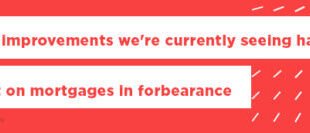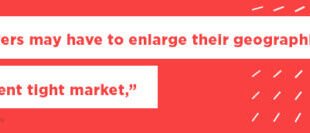When you think of a traditional mortgage, a conventional loan is probably what comes to mind.
Conventional loans are the most popular type of mortgage loan used to purchase a home.
In this article, we will cover conventional loan requirements, loan limits, rates, and see how they compare to government mortgage loans.
Rate Search: Check Today’s Mortgage Rates and Get Pre-Approved
What is a Conventional Loan?
A conventional loan is a mortgage that is not backed by the Federal Government. They are offered by private lenders and generally sold to Fannie Mae or Freddie Mac, the two largest buyers of conventional loans. They require a 620 credit score with a down payment between 3% – 20% of the purchase price.
Conventional Loan Requirements
- 620 minimum credit score
- Two years of stable employment history
- Debt-to-income ratio must not exceed 43%
- 2-3 months of mortgage payments in reserve funds
- Three year waiting period after bankruptcy or foreclosure
Minimum Down Payment for a Conventional Loan
A common misconception is that conventional loans require a 20% down payment, however, that is not the case.
You can get a conventional loan with as little as 5% down, private mortgage insurance (PMI) will be required. If you don’t want to be required to carry PMI, you will need 20% down.
In order to compete with Government loans, such as FHA loans, there are a number of conventional loan programs designed for first-time homebuyers, or anyone that does not have the funds for a large down payment.
- Conventional Loan (5%-20% down) – You can get a conventional mortgage loan with just 5% down. They do require PMI if you have less than a 20% down payment.
- Conventional 97 loan (3% down) – A conventional 97 loan requires just a 3% down payment, which is even lower than FHA (3.5%). The 97 means a 97% loan-to-value ratio, another way of saying with 3% down you can finance 97% of the price of the home.
- Piggyback mortgage (10% down) – A piggyback loan is a creative way to get a conventional home loan with no PMI while putting less than 20% down. Instead of getting one loan for 80% of the purchase price which would require a 20% down payment, you will get a separate loan for 10% LTV, leaving you just needing to put 10% down and avoiding mortgage insurance.
- Fannie Mae HomeReady loan (3% down) -Fannie Mae created their HomeReady loan program to help low-to-moderate income families in low-income, minority, and disaster-impacted communities
- Freddie Mac Home Possible loan (3% down) – Freddie Mac’s Home Possible loan is very similar to the HomeReady loan program. It’s designed for low-to-median-income borrowers, move-up, and first-time homebuyers.
Down Payment Guidelines
- Down payment between 5%-20%
- 3% down with a Conventional 97 loan
- PMI required if using less than a 20% down payment
- Can be a gift from a friend or family member
- Down payment can come from savings, 401k, or investment accounts
Conventional Loan Rates
Interest rates on conventional loans are currently at historic lows. The average interest rate on a 30-year fixed-rate loan is under 3.0%. This is exceptional considering that just 10 years conventional loan interest rates were above 6%.
The mortgage rate will vary based on several different factors. Your credit score has the biggest impact on the rate. The loan term also plays a role in your rate, the shorter the term, the lower your rate will be. Interest rates also vary by lender so it’s important that you shop loan estimates with multiple lenders.
Average conventional loan rates (September 2020)
| Loan type | Average Interest Rate | APR |
|---|---|---|
| 30-Year fixed-rate mortgage | 2.85% | 2.87% |
| 15-year fixed-rate mortgage | 2.765% | 2.825% |
| FHA 30-Year fixed-rate | 2.925% | 2.95% |
| 5/1 adjustable-rate mortgage | 3.725% | 3.10% |
Advertised interest rates from lenders are based on an ideal borrower with perfect credit, so unless you have a 750 credit score you can expect a higher rate. Be sure to apply with mortgage lenders to get a rate quote based on your situation.
2020 Conventional Loan Limits
Conventional loans have higher loan limits than government mortgage loans. Depending on where you live the maximum loan amount is between $ 510,400 – $ 765,600. If you need a loan that exceeds the conventional loan limit you will need a nonconforming loan such as a jumbo loan.
How to Qualify for a Conventional Loan
Some people mistakenly believe that conventional loans are incredibly hard to qualify for. In reality, besides the higher credit requirement, they aren’t any more difficult to qualify for than government-backed loans, like FHA or VA.
Like with any type of mortgage you need to be able to prove you are capable to make the monthly payments.
Lenders will look at a variety of factors to determine whether or not a borrower qualifies.
Credit
Conventional loans do have higher credit score requirements than FHA loans. To qualify for a conventional mortgage you’ll need at least a 620 FICO score.
A mortgage lender looks at your entire credit history, not just your credit score to determine your eligibility. If you have multiple collection accounts or late payments you may get denied a loan despite meeting the minimum score requirement.
Conventional loan credit requirements
- No more than one mortgage late payment in the last 12 months
- No mortgage late payments in the last 6 months
- 36 month waiting period after a bankruptcy or foreclosure
- Less than $ 1,000 in collections
- No judgments or liens
Income
Lenders will only give a loan to borrowers who can prove they have a reliable income that is sufficient for the loan amount they are seeking. You may be able to use other types of income such as child support, alimony, seasonal, and part-time employment.
You must be able to prove your income with the following documents.
- 1-2 months of Paystubs
- Two years of W2’s and tax returns
- Proof of degree for new graduates
- Three months of bank statements
- Proof of seasonal, or part-time income
Employment
Two years of stable employment history is required for all types of home loans. You don’t need need to be at the same employer for two years as long as you stay in the same field.
Self-employed borrowers need to provide two years’ worth of tax returns to prove income. Lenders take the two-year total income and divide it by two to come up with your average income to base the maximum loan amount you will receive.
Debt-to-Income
The maximum debt-to-income ratio (DTI) ratio allowed for conventional loans is 43%.
Your DTI ratio is the amount of your income that goes towards monthly debt obligations such as auto loans, credit cards, and mortgage payments.
Example: If your income is $ 5,000 per month and your total monthly payments are $ 2,000, your debt-to-income ratio is 40%.
Closing Costs
Closing costs are fees charged by mortgage lenders for processing and issuing a loan.
A home appraisal, origination fees, and title insurance are some of the items included. On average, closing costs amount to 2%-5% of the loan amount.
With conventional loans, sellers are allowed to cover a portion of the closing costs for the buyer
Mortgage Insurance
Conventional loans do not require mortgage insurance if the borrower has at least a 20% down payment.
If you put less than 20% down you will be required to carry private mortgage insurance until the loan-to-value ratio hits 78%, at which point PMI will be eliminated.
This is unlike government loans such as FHA and USDA loans which require mortgage insurance regardless of the down payment amount. If putting less than 10% down on an FHA loan, mortgage insurance will be required for the life of the loan.
Conventional loans also do not have up-front mortgage insurance that government-backed loans require.
Use our calculator to see how much home you can afford after factoring in PMI, property taxes, and homeowners’ insurance.
Eligible Property Types
A great benefit of conventional mortgages is that they are available on many types of properties.
- Single Family Homes
- Second homes and investment properties
- Condos and townhomes
- Rehab properties
- Muli-unit properties
- Planned unit developments (PUDs)
Conventional Loan Pros and Cons
Pros
- Adjustable-rate and fixed-rate loan terms available
- No private mortgage insurance (PMI) with 80% loan-to-value ratio
- Available for second homes and investment properties
- PMI cancels when the LTV reaches 78%
- Lower PMI rates than FHA
- Conventional 97 with 3% down
- Higher loan limits than Government home loans
Cons
- Higher credit requirements than other loan option
- Large down payment (5%-20%)
- Qualifying guidelines are more strict
- Low-income borrowers may not qualify
Conventional Loans vs. FHA Loans
Whether you should get an FHA loan or a conventional loan depends on your situation. If you have limited savings and credit issues then an FHA loan may be the best loan option. However, if you have a lot in savings and good credit then a conventional loan may be a better fit.
You should also speak to a loan officer to compare the two types of loans to determine which one is most beneficial for you.
Conforming Loans
A conforming loan is a mortgage loan that adheres to the standards set by Fannie Mae and Freddie Mac, including maximum loan amounts.
Fannie Mae and Freddie Mac are the two largest buyers of conventional loans.
The standard loan limit for a conforming conventional mortgage is $ 510,400 for a single-family home that you intend to live in. For borrowers in high-cost areas, the limit can be as high as $ 765,600.
Conventional Loan Alternatives
If you find you’re not eligible for a conventional mortgage there are alternatives that are easier to qualify for. Government-backed loans are issued by private lenders and guaranteed by the Government, they have low down payment and credit requirements.
- FHA Loans – An FHA loan is popular with first-time buyers for its low 580 credit score requirements and 3.5% down payment. Some lenders may be able to approve borrowers with a 500 credit score with 10% down.
- VA Loans – a VA loan is for Veterans; they come with no downpayment or mortgage insurance. Credit score requirements vary by lender. Many lenders require a 620+ credit score for VA loans, but some lenders are able to go down as low as 500.
- USDA Loans – The Department of US Agriculture created the USDA loan program for low-to-median income homebuyers in rural areas of the country. Because they offer 100% financing a higher credit score of 640 is typically required.
A conventional loan may be a good fit for you if:
- If you have a 620 credit score
- Want to avoid PMI by putting at least 20% down
- Have a high income (low debt-to-income ratio)
- Refinance out of an FHA loan into conventional to drop PMI
- Need a loan amount above the FHA loan limit




